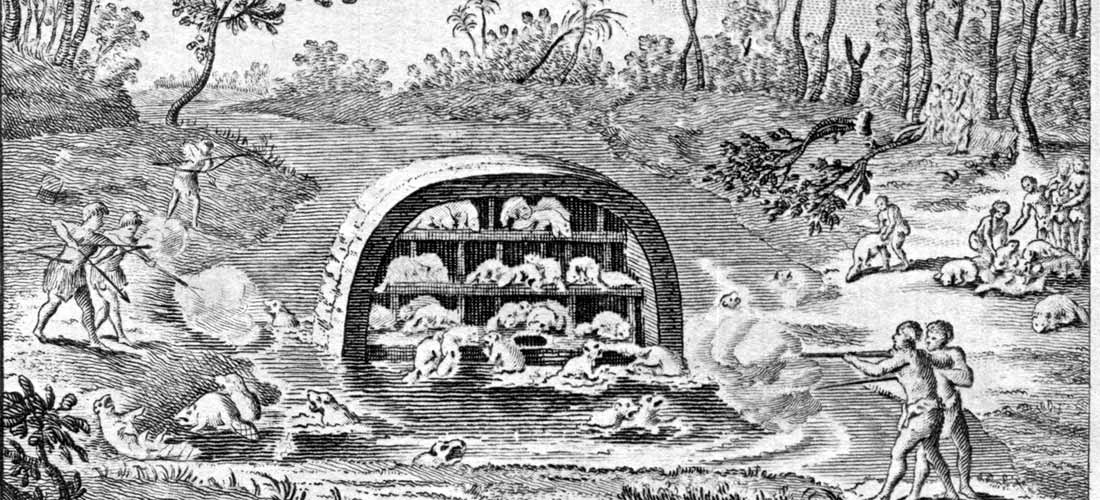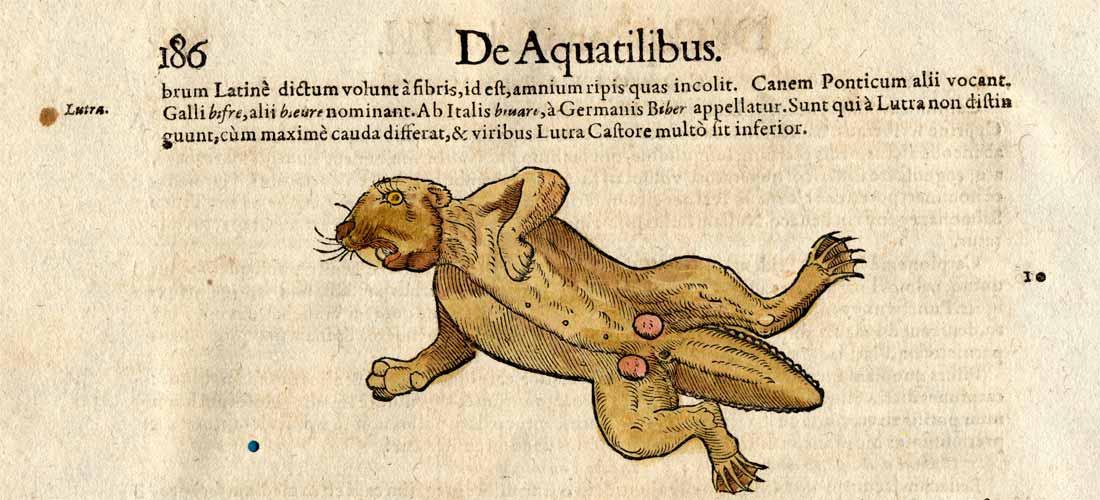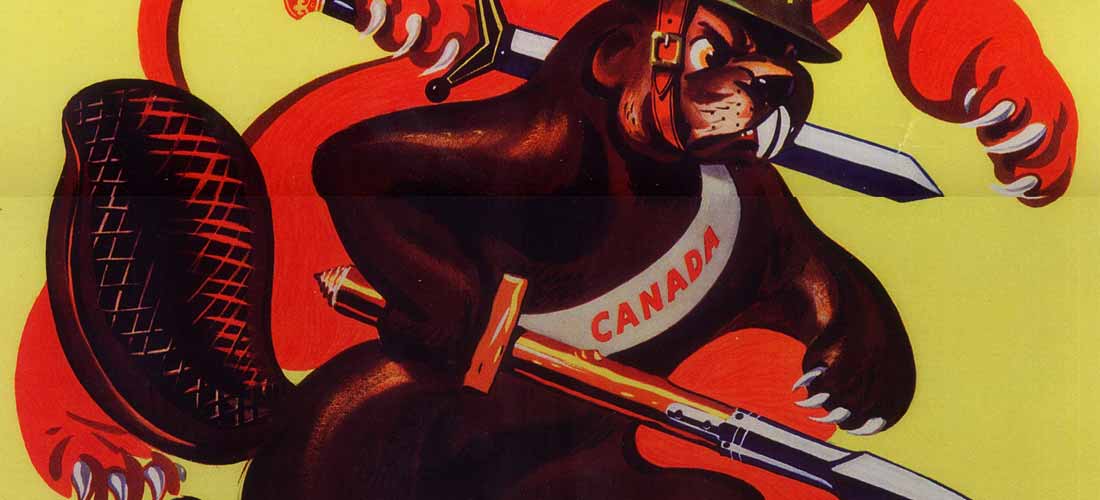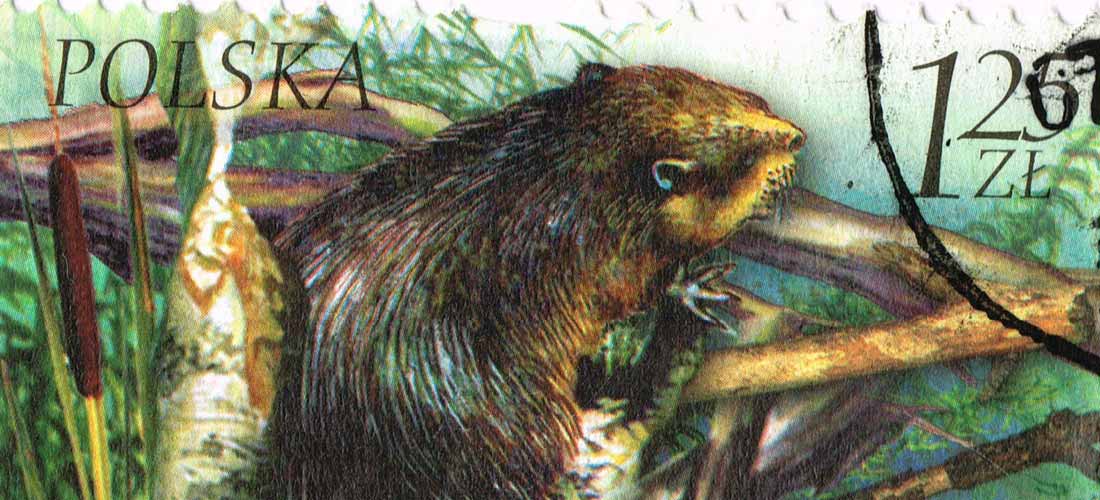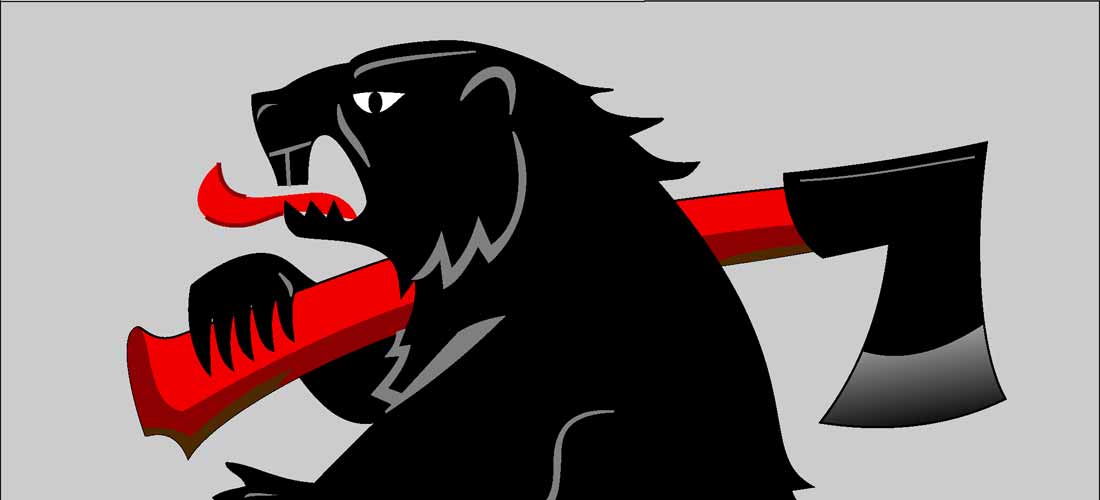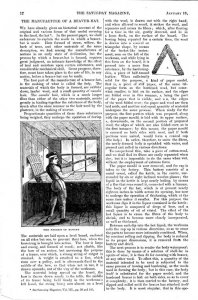Artikel aus dem christlichen englischen Wochenblatt The Saturday Magazine vom 10.Januar 1835 über den Produktionsschritte bei der Herstellung eines Biberhutes.
THE MANUFACTURE OF A BEAVER-HAT.
THE SATURDAY MAGAZINE. January 10. 1835
We have already given an historical account of the original and various forms of that useful covering to the head, the hat", In the present paper, we shall endeavour to explain the mode in which a beaver hat is made. Hats formed of straw, willow, the bark of trees, and other materials of the same description, we find among the manufactures of nations in an early state of civilization, but the process by which a beaver-hat is formed, requires great judgment, an intimate knowledge of the effect of heat and moisture upon certain substances, and considerable mechanical skill. Great progress, therefore, must have taken place in the arts of life, in any nation, before a beaver-hat can be made.
The first part of the manufacture of a beaver-hat, is the making of what is called the body. The materials of which the body is formed, are rabbits' down, lambs' wool, and a small quantity of camels' hair. The camels' hair, which is a much longer fibre than either of the other two materials, assists greatly in binding together the substance of the body, much after the same manner as the hair used by the plasterer, in the making of mortar.
Proportionate quantities of these three substances being weighed, they undergo the operation of bowing.

THE PROCESS OF BOWING
The materials are laid upon a level board, enclosed on all sides but one, to prevent their loss, when the bowstring is brought into action. The bow is large and strong, and formed of wood; not pliable, like the bow of an archer, but answering the purpose of a frame, over which, a strong string of catgut is strained. A weight is attached to a line, which runs over a pulley, and is afterwards fixed to the middle of the bow, so that when not in use, it is drawn upwards, out of the way of the workman.
The material being spread on the board, the bow is drawn down nearly to the table, the middle of its frame being held firmly in the workman"s left hand, the string being now almost on a level
*See Saturday Magazine, Vol, III, pp. 20 and 100.
with the wool, is drawn out with the right hand, and when allowed to recoil, it strikes the wool, and separates and mixes its fibres; which, after floating for a time in the air, gently descend, and lie in a loose flock, on the surface of the board. .

The bowing being repeated for a certain time, the wool
is drawn into a conical or triangular shape, by means of the basket-like instrument, seen on the left of the workman, and while lying in this form on the board, it is pressed into a more firm substance, by the hardening-skin, a piece of half-tanned leather. When sufficiently
solid for the purpose, a kind of paper model, that is, a piece of stiff paper, of the same triangular form as the hardened wool, but somewhat smaller, is laid on its surface, and the edges are folded over in this manner, A being the part of the paper that is visible, and n n, the edges of the wool folded over; the paper and wool are then laid aside, and another and equal quantity of material undergoes the same process. When ready for the purpose, the first portion which was prepared, along with the paper mould, is laid with its upper surface, A, downwards, on the second portion of prepared wool, the edges of which are also folded over, as in the first instance; by this means, the paper mould is covered on both sides with wool, and if both portions were united, would form a conical cap (the budy.) In order, therefore, to unite the fibres, the newly-formed body is sprinkled with water, and pressed and rolled in various directions.
To comprehend this, take a piece of cotton-wool, and we shall find its fibres are easily separated when dry; but it is impossible to do the same when wet without the employment of extreme force.
The paper mould is now removed, and the cap is taken to the battery. This battery consists of a metal vessel, called the kettle, in the centre, surrounded by six or eight inclined wooden planes; the liquid in the kettle is kept nearly boiling, by means of a flue that runs round it, connected with a furnace. The body of the hat, which is at present nearly eighteen inches in width across its opening, has now to undergo the operation of thickening, which at the same time makes it smaller. For this purpose the workman dips it in the liquor contained in the kettle: this liquor is composed of dregs of beer, and a small quantity of oil of vitriol. The effect of the hot liquor is to cause the fibres of the body to shrink, and to become more closely incorporated, as well as thickened.
Between each dip into the hot liquid, the workman rolls the cap up in various directions, so as to cause the parts to become more intimately combined. When, by constant rolling and dipping, the body is reduced to its proper dimensions, it is removed from the battery and dried.
The next process is to render the body waterproof: this is done by means of a solution of shell-lac in spirits of wine; it is then fit for covering with beaver, or any other wool. To effect this, a quantity of the material intended to be used is subjected to the same process of bowing and hardening, as the wools used in forming the body; but in this case, the body itself is substituted for the paper model, and the hardened beaver is laid on both sides, so as to cover it completely; it is then carried to the battery, and dipped and rolled until the beaver has attached itself to the body.

THE HATMAKERS BATTERY
It is most singular, that in this operation, the root end of the hair or wool employed invariably attaches itself to the body, so that when dry, it appears as it did when growing on the back of the animal. The body is now turned inside out, and another quantity of beaver is applied in a strip along its margin, to form the under side of the brim of the hat. It is now completely covered, but is still in the form of a conical cap.
To make this cap into the shape of a hat, it is, while still wet, drawn over a wooden block in the form of the crown of a hat, until the peak of the cap is gradually obliterated and becomes a flat surface, forming the top of the hat, and the lower border of the body is drawn out flat on the slanting board of the battery, and forms the brim.

Drawing the body oyer the block. The body drawn over the block.
It is then dipped in cold water, which immediately stiffens it by hardening the varnish. It is next clipped; that is, the beaver is cut into an equal length over the surface, like the pile in velvet, and afterwards carried to be dyed.
The dyeing is managed in the same manner as in dyeing any other woollen goods, by steeping it in the vat of black dye.
The only remaining process it has to undergo is that of finishing, which is performed by heat and
moisture, and the use of a heavy iron to lay the hair all in one direction. The rim is also cut of an equal width all round, and it is fit to leave the hands of the manufacturer, to be bound and lined by women.

